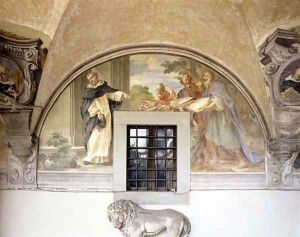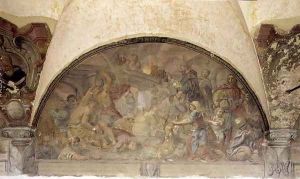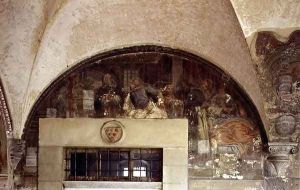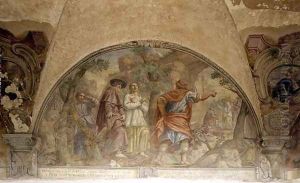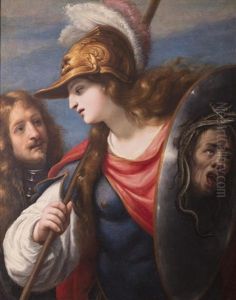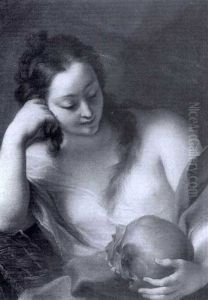Cosimo Ulivelli Paintings
Cosimo Ulivelli was an Italian painter of the Baroque period, born in 1625 in Florence, Italy. Not as widely recognized as some of his contemporaries, Ulivelli nonetheless contributed to the rich tapestry of Baroque art that was flourishing in Italy during the 17th century. He was a product of the Florentine school, which was known for its emphasis on draftsmanship, a characteristic that can be seen in Ulivelli's careful attention to detail and composition in his works.
Ulivelli trained under the guidance of the Florentine painter Jacopo Vignali, who was a prominent artist of that time. Vignali's influence is evident in Ulivelli's work, particularly in his use of color and light. Ulivelli was not a revolutionary artist, but he worked within the stylistic confines of his era, showing proficiency and a refined technique in his religious and historical paintings.
Throughout his career, Ulivelli received various commissions for churches and other institutions in Florence and its surrounding areas. His work was characterized by the dramatic use of light and shadow, a hallmark of Baroque art, and his religious paintings often conveyed the emotional intensity associated with the Counter-Reformation, which sought to reassert the power and glory of the Catholic Church during a time of religious turmoil in Europe.
Despite his talents, Cosimo Ulivelli did not achieve the same level of fame as some of his contemporaries, such as Caravaggio or Bernini, and as a result, his works are not as well-known or as frequently studied. However, for those interested in the Baroque period and the lesser-known artists of the time, Ulivelli's paintings offer a glimpse into the era's artistic diversity and the skill of its practitioners.
Cosimo Ulivelli died in 1704, leaving behind a modest but important collection of works that continue to be appreciated by art historians and enthusiasts. His paintings can still be found in various churches and collections, primarily in and around Florence, serving as a testament to his contribution to the Baroque movement.
